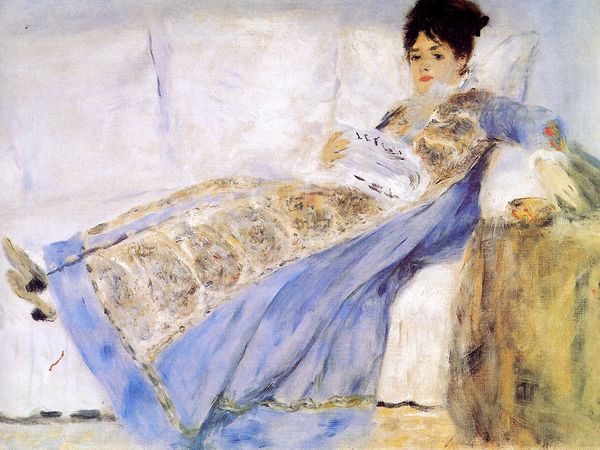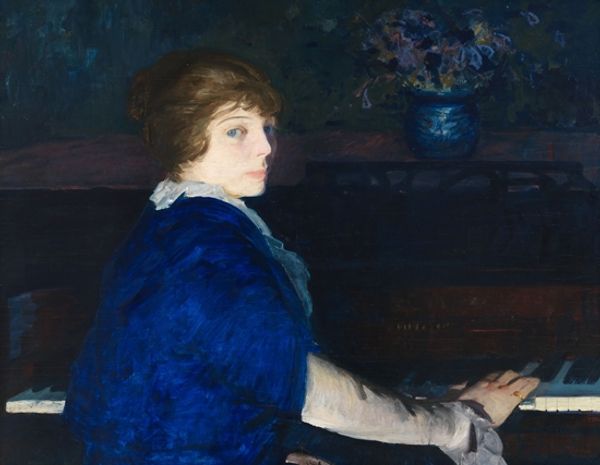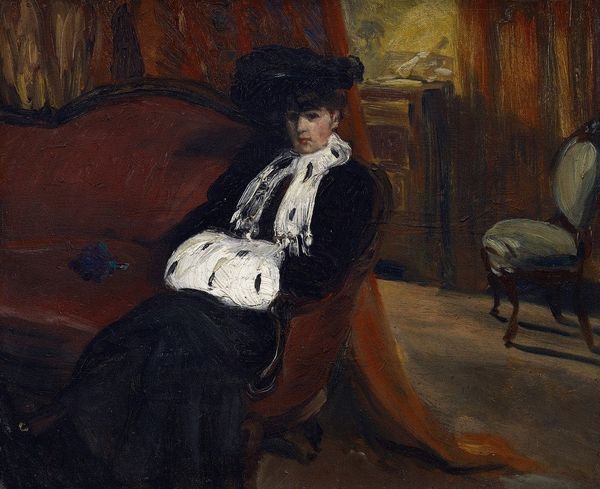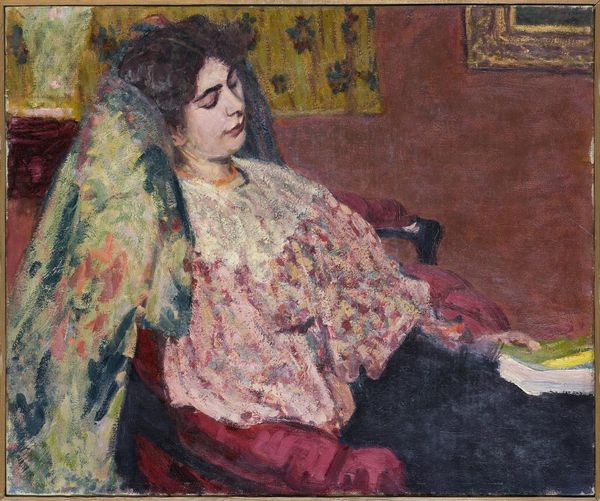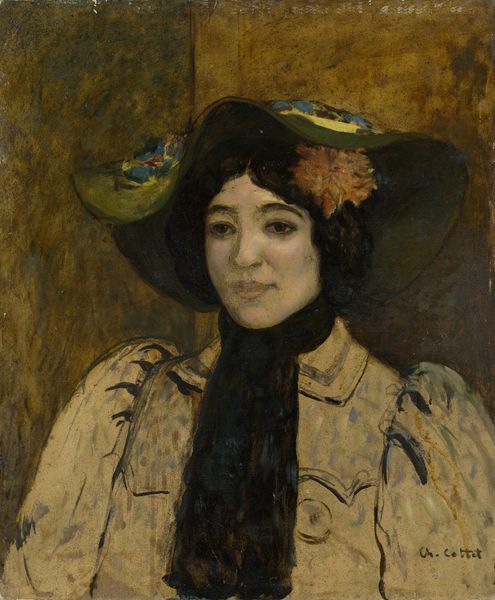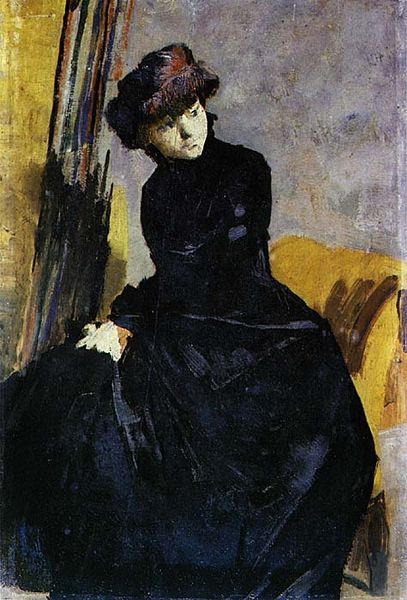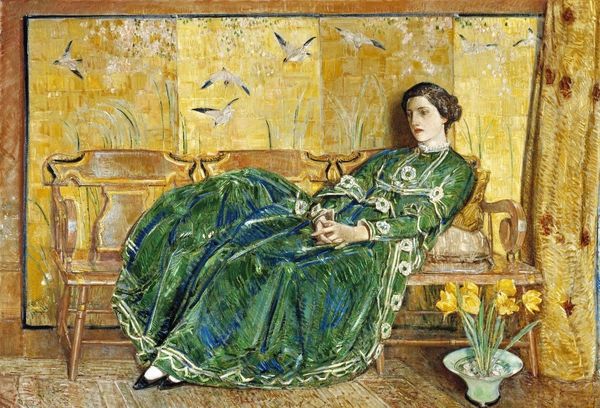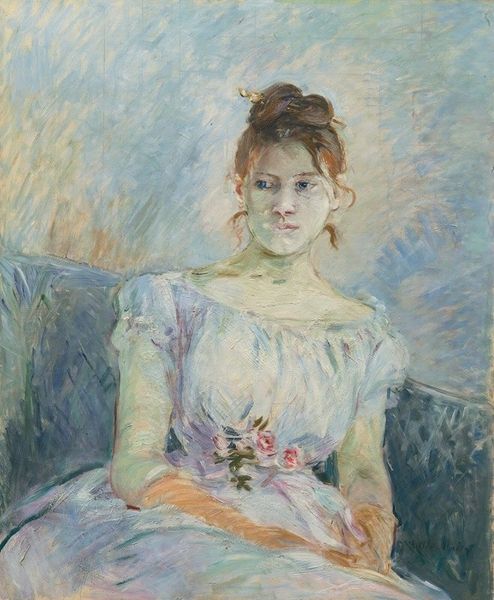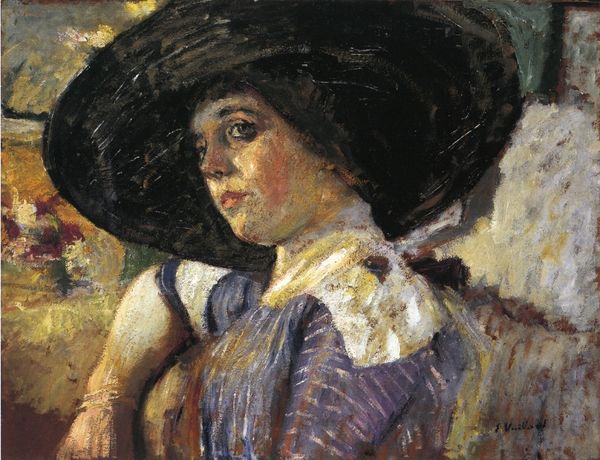
Copyright: Public Domain: Artvee
Curator: Welcome! We're looking at William James Glackens' "The Purple Dress," likely painted between 1908 and 1910. What strikes you most about it? Editor: It’s wonderfully…tactile! Look at that surface. The energetic brushwork, the way the oil paint is applied in thick impasto, giving such substance to the dress, the sofa, even the backdrop. You can almost feel the texture. Curator: Glackens, influenced by French Impressionism, indeed pays close attention to the material qualities. Beyond the texture, consider how this portrayal fits within the socio-cultural context of early 20th-century America. He captured everyday life with a realist's eye, diverging from the more idealized art prevalent at the time. Editor: Absolutely, it feels radical for the era. The visible brushstrokes are key. They break down any sense of illusionism, forcing us to acknowledge the materiality of the painting itself. Is this art, or crafted object? Where are the boundaries? Curator: Glackens exhibited with "The Eight," a group of artists who challenged the academic system. Their focus on urban realism and individual expression reflected broader social and political shifts. Galleries like Macbeth played a pivotal role promoting such new talent. This allowed artists to depict contemporary subjects, and it gave access to wider audiences. Editor: Right, we’re talking about artistic labor too: the labor to apply these materials! Did Glackens prime his own canvases? How was the paint manufactured? Was his production driven by a specific type of paintbrush or linseed oil readily available to artists at that time? Curator: These considerations help us appreciate how art production intertwined with the evolving landscape of the art market. "The Purple Dress" reveals a dialogue between individual expression and societal change, influenced by his exposure to avant-garde currents, and he filtered this vision of modernity for American viewers. Editor: This tension makes "The Purple Dress" so captivating. Glackens isn't merely depicting a woman in a dress. He is exploring new art boundaries! Curator: It provides an access point for discussing class, labor, and the evolution of artistic production in the early 20th century. Editor: An enriching lens through which to interpret art of this period. Curator: Precisely. It highlights the dynamic interaction between individual expression and social forces at play.
Comments
No comments
Be the first to comment and join the conversation on the ultimate creative platform.
